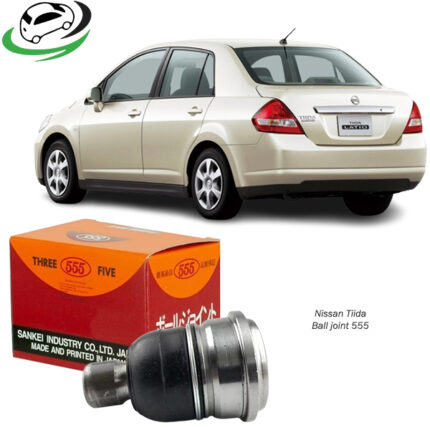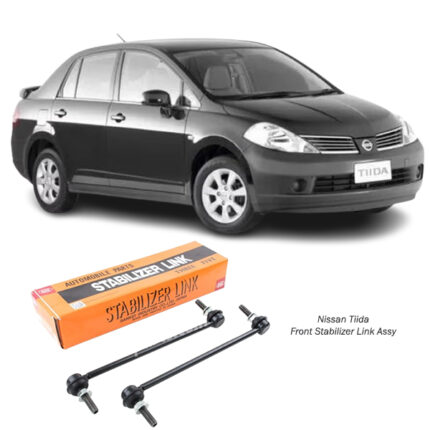Get Nissan Tiida Rear Buffer Engine Mounting Assy 11360-ED000 in Kenya
The Rear Buffer Engine Mounting Assy is an essential component in modern vehicles, playing a pivotal role in maintaining the integrity and functionality of the engine and its connections to the vehicle’s chassis. This assembly is part of the broader system of engine mounts, which are responsible for securing the engine in place while minimizing the transfer of vibrations and noise from the engine to the vehicle cabin. In this detailed explanation, we will break down the function, construction, types, maintenance, and significance of the rear buffer engine mounting assembly.
What is a Rear Buffer Engine Mounting Assy?
The rear buffer engine mounting assembly, often referred to simply as the rear engine mount, is a key part of the engine mounting system. Its primary function is to secure the engine to the vehicle’s chassis, typically at the rear portion of the engine bay. This mount helps stabilize the engine during operation, ensuring that it stays in position while the vehicle is in motion. The “buffer” aspect refers to its ability to absorb and dampen engine vibrations, preventing them from being transmitted to the cabin.
The rear buffer engine mounting assembly often consists of several parts, including the mounting bracket, rubber or polyurethane isolator, and sometimes hydraulic components that enhance vibration damping. These mounts are designed to handle the engine’s weight, torque, and vibration while providing a balance of strength and flexibility.
Function of the Rear Buffer Engine Mounting Assy
- Engine Stability: The rear engine mount is one of the main mounts that holds the engine in place. It prevents excessive engine movement, which could lead to misalignment and potential damage to various engine components and the surrounding chassis.
- Vibration Reduction: The engine, especially in vehicles with internal combustion engines, generates significant vibrations during operation. The rear buffer engine mount absorbs these vibrations, preventing them from being transmitted to the vehicle’s frame and, ultimately, the passenger cabin. This helps ensure a smooth and comfortable ride.
- Torque Control: The rear mount also plays a role in controlling the engine’s torque. When the engine accelerates, it generates torque that can cause the engine to twist. The rear buffer mount helps absorb this torque, maintaining engine alignment and minimizing the strain on other components like the transmission and drivetrain.
- Noise Isolation: Vibrations often lead to noise, which can make the driving experience unpleasant. The rear engine mount helps isolate engine noise, contributing to a quieter and more enjoyable ride.
Components of the Rear Buffer Engine Mounting Assy
The rear buffer engine mounting assembly typically includes the following components:
- Mounting Bracket: This is usually made of metal and serves as the main frame that attaches the engine mount to the vehicle’s chassis. It provides the necessary strength to hold the engine securely in place.
- Rubber or Polyurethane Isolator: The isolator is the most important component in terms of vibration damping. It is often made of rubber, though some modern mounts use polyurethane for improved durability. The isolator absorbs engine vibrations, preventing them from reaching the vehicle frame. The type of material used can vary depending on the vehicle’s requirements for comfort, performance, and durability.
- Hydraulic Dampers (Optional): Some rear buffer engine mounts include hydraulic dampers, which further enhance vibration isolation. These dampers use fluid to provide a more responsive and adjustable damping effect. This is particularly common in high-performance or luxury vehicles that require more precise control over engine movement.
- Fastening Bolts and Nuts: These components secure the engine mount to the chassis and the engine. The bolts are designed to withstand the engine’s weight and movement forces without loosening or breaking over time.
Types of Rear Buffer Engine Mounting Assemblies
While all rear engine mounts serve a similar purpose, there are different types designed for specific vehicle applications:
- Standard Engine Mounts: These are the most common type and are typically made from rubber or rubber-based compounds. They are designed for everyday passenger vehicles and offer a balance between vibration damping and durability.
- Hydraulic Engine Mounts: Hydraulic mounts are used in vehicles that demand more advanced vibration isolation, such as luxury cars and high-performance vehicles. The hydraulic mechanism in these mounts adjusts the level of damping depending on the engine’s speed and load, offering smoother performance.
- Polyurethane Engine Mounts: Polyurethane is a more durable material compared to rubber, offering better resistance to wear and tear. Polyurethane mounts are typically used in performance vehicles or vehicles that experience higher engine loads. While they may not provide as much vibration isolation as rubber, they offer enhanced longevity and strength.
- Active Engine Mounts: These mounts use electronic systems to adjust the damping characteristics of the engine mount in real-time. Sensors monitor engine movement, and the mount adjusts to provide optimal vibration control. These are often found in high-end vehicles with advanced comfort and performance needs.
Importance of the Rear Buffer Engine Mounting Assy
- Enhanced Driving Comfort: By absorbing vibrations, the rear buffer engine mounting assembly plays a crucial role in reducing noise and vibrations that would otherwise be felt throughout the cabin. This contributes significantly to a smoother, quieter driving experience, which is essential for passenger comfort.
- Protecting Engine Components: The rear engine mount helps maintain proper alignment and stability of the engine. Without it, excessive engine movement could lead to increased wear and tear on other components like the transmission, exhaust system, and cooling system. Over time, this could result in costly repairs or even engine failure.
- Safety: A properly functioning rear buffer engine mount ensures that the engine stays securely attached to the vehicle. In the event of a collision or sudden deceleration, a damaged or failed engine mount could lead to engine displacement, which could cause additional damage or even pose a safety risk to passengers.
Signs of a Faulty Rear Buffer Engine Mounting Assy
Over time, the rear buffer engine mounting assembly can wear out due to constant exposure to engine vibrations, heat, and road conditions. Here are some signs that the rear engine mount may be faulty:
- Excessive Vibration: If you notice increased vibration in the cabin, especially during acceleration or deceleration, it could be a sign that the engine mount is no longer absorbing vibrations effectively.
- Engine Movement: A faulty rear engine mount may cause the engine to move excessively within the engine bay, leading to visible shifts in engine position or unusual noises, especially when starting the vehicle.
- Clunking or Rattling Noises: If you hear clunking or rattling sounds, particularly when accelerating or shifting gears, it may indicate that the engine mount is loose or damaged.
- Misalignment of Engine Components: If the engine is misaligned, it may cause strain on components like the exhaust system, belts, or drive shafts. This can lead to abnormal wear or even failure of these parts.
Maintenance of the Rear Buffer Engine Mounting Assy
Regular maintenance and timely replacement of the rear buffer engine mounting assembly can help ensure the smooth operation of your vehicle. Here are some maintenance tips:
- Inspect Mounts Periodically: During regular vehicle maintenance, have the engine mounts inspected for signs of wear, cracks, or damage. This is especially important if you notice unusual vibrations or noises.
- Replace Worn or Damaged Mounts: If the rear engine mount is found to be damaged or worn out, it is essential to replace it promptly to prevent further damage to the engine and other vehicle components.
- Addressing Vibration Issues: If you experience increased cabin vibrations, it may be time to check the engine mounts, as this can be an early sign of wear.
- Use Quality Parts: Always ensure that the replacement engine mounts are of high quality and suited to your vehicle’s specific make and model. This ensures proper fitment and longevity of the mount.
Conclusion
The rear buffer engine mounting assembly is an essential part of the vehicle’s engine mounting system. It serves to stabilize the engine, absorb vibrations, and isolate noise, all while maintaining engine alignment. By keeping the engine securely attached to the vehicle’s chassis, the rear engine mount contributes to overall vehicle performance, comfort, and safety. Regular inspection and timely replacement of faulty engine mounts can help maintain the longevity and smooth operation of your vehicle.
Follow us on Facebook for more parts.




